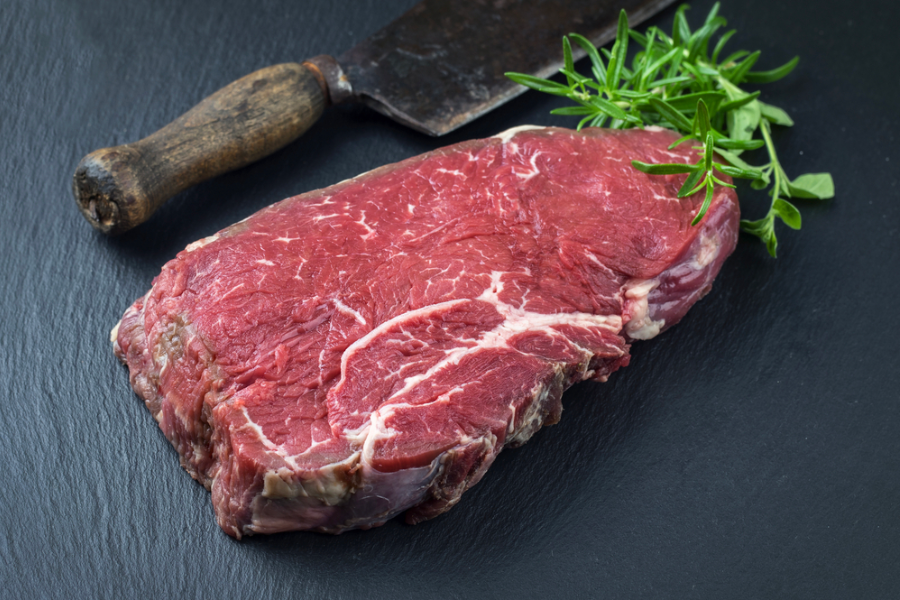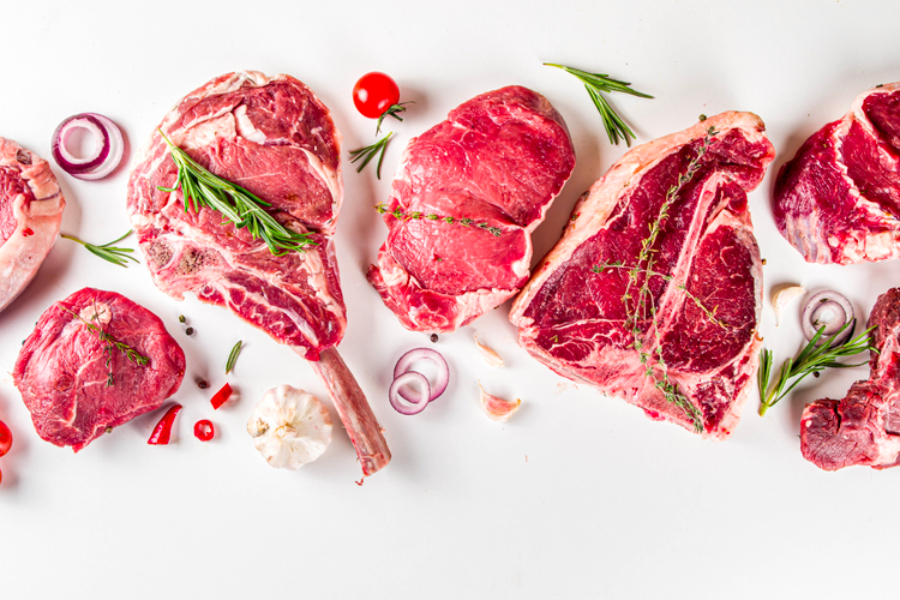Bison Vs Beef: The Emotional Battle For A Healthier Heart
The beef vs. bison debate is heavily influenced by environmental and health concerns in addition to taste. Choose bison over beef if you want to make a good decision because it’s usually leaner and higher in nutrients.
You will have a clear understanding of the key distinctions between these two meats after carefully reading this article, including information on their fat level, nutrient density, and even carbon footprint. We’ll break down the specifics so you can make an informed decision about which is the better option for you.
WHAT IS BISON?
Bison or buffalo are large members of the Bovidae family, which also includes cattle, goats, and sheep. The two main species of bison are the American bison (Bison bison) and the European bison (Bison bonasus), also referred to as the wisent.
Massive bison have humped shoulders and shaggy coats. Bulls are stronger and bigger than cows. In harsh winters, bison clear snow with their muscular necks and sharp horns while grazing on grasses and other plants.

WHAT IS BEEF?
Cattle, which are domesticated animals maintained for a variety of reasons, including the production of meat, are the source of beef. Large mammals in the Bovidae family include cattle. One of the most popular types of meat consumed worldwide, beef plays a key role in many different cuisines.

HOW ARE BEEF AND BISON DIFFERENT?
Bison and beef are both types of meat, although bison comes from a different animal and has different characteristics:
Animal Source:
Beef is produced from cattle, primarily adult females and castrated males raised for meat production.
The American bison, also known as the buffalo, and the European bison, sometimes known as the wisent, are both huge creatures with shaggy coats.
Appearance:
Compared to beef, bison meat typically has a darker, richer red color. This is caused by variations in the myoglobin level, a protein in charge of storing oxygen in muscles.
Due to its reduced fat content, bison meat frequently has a rougher texture than beef.
Fat Content:
Bison meat typically has less intramuscular fat (marbling) throughout the muscle fibers than beef. A leaner texture and flavor are the results.
Depending on the cut and breed of the cattle, the fat percentage in beef can change, with some cuts having more marbling than others.
Nutritional Profile:
Compared to beef, bison meat typically contains lower amounts of total and saturated fat. Additionally, it might contain extra protein as well as various vitamins and minerals like zinc and iron.
Beef is a good provider of these nutrients and contains a number of crucial elements, including protein, iron, zinc, and B vitamins.
Taste and Flavor:
It is generally asserted that bison meat has a substantially sweeter, stronger flavor than beef. However, depending on the cut and grading, the amount of fat in beef varies significantly. Some people think the meat tastes less gamey than that of other wild animals.
Environmental Impact:
Bison are accustomed to eating wild grasses, which contributes to the persistence of grassland ecosystems. Breed, diet, and age are just a few of the many variables that affect the taste and tenderness of beef. Compared to conventional beef production, which usually uses intensive farming methods, they have less of an impact on the environment.
Cultural and Historical Significance:
Numerous Native American tribes cherish the bison as a prominent icon of the American West.
Beef has a long history of consumption and holds a significant place in many civilizations throughout the world.
Availability and Cost:
Bison meat is frequently harder to find than beef and may also cost more because of factors like restricted production and growing customer demand for lean meats.
The consumption of beef or bison is frequently influenced by ethical issues, dietary goals, and personal preferences. Beef and bison both have unique characteristics of their own. It is worthwhile to try both flavors in order to determine which one and which nutritional profile better suit your preferences and dietary requirements.
WHAT MAKES BISON HEALTHIER THAN BEEF?
Beef and bison can both be included in a balanced diet. In order to determine the alpha protein on the range, we compared beef and buffalo in each significant category.
Bison and Beef, which is better?

CONCLUSION
If your goal is a healthier, more eco-friendly lifestyle, bison takes the win over beef. It gives you less fat, more nutrients, and leaves a smaller carbon footprint. Plus, you don’t give up flavor. So next time you’re at the grocery store, why not make a choice that benefits both you and the planet?
FAQS
Is bison more expensive than beef?
Yes, generally it is. Bison tends to cost more because it’s less common and often raised under higher quality conditions. But remember, you’re investing in better nutrition and eco-friendliness.
Can I use bison in all beef recipes?
You can for the most part, but be mindful of its lower fat content. You might need to tweak cooking times or add some extra seasoning to get it just right.
Is bison meat easy to find in grocery stores?
It depends on where you shop. You may not find it in every local grocery store, but specialty shops and online stores are usually stocked. Going that extra mile could be worth it for your health and the environment.